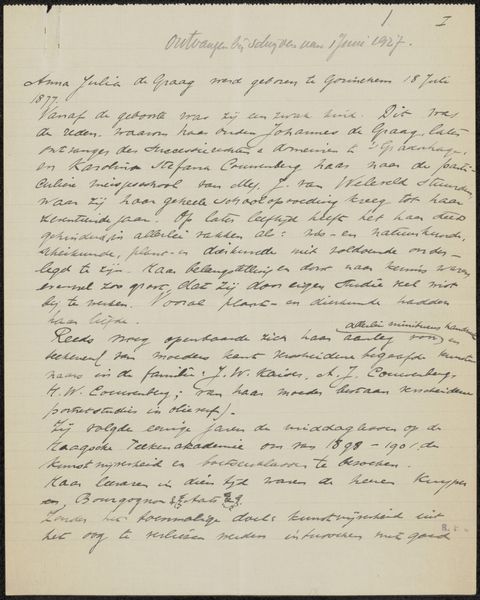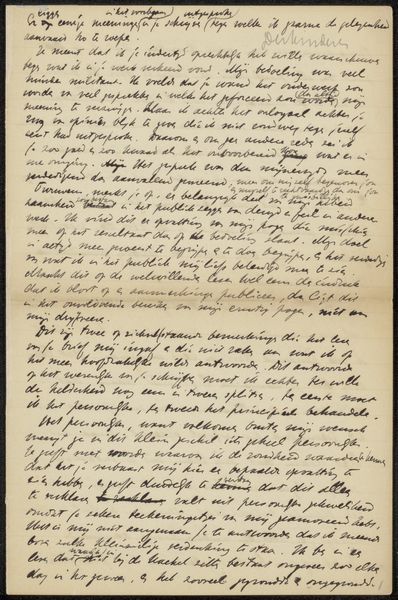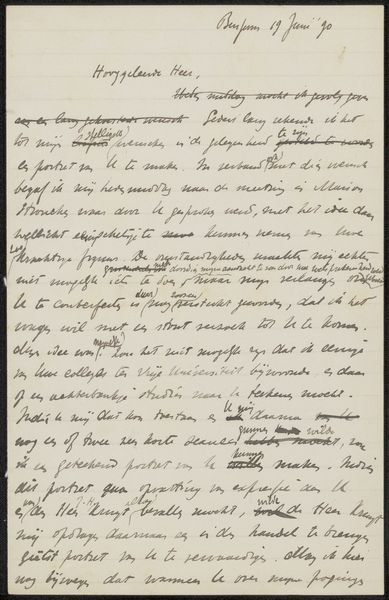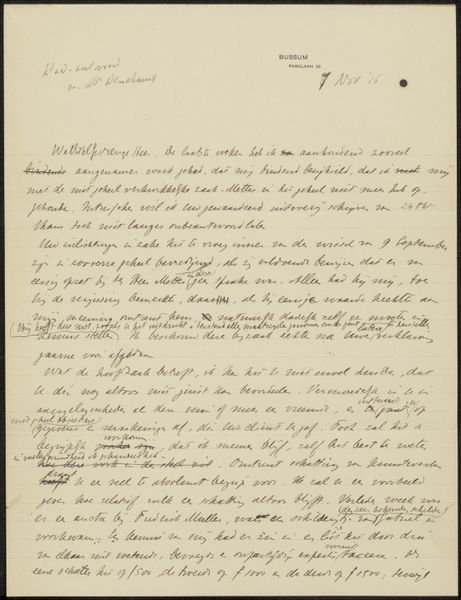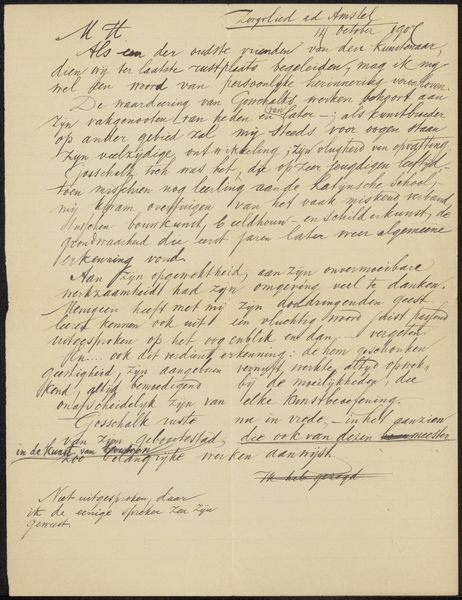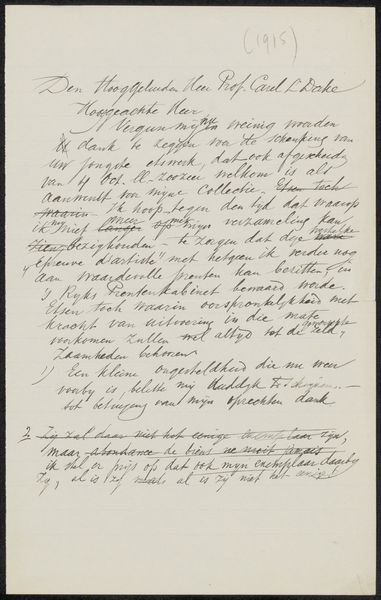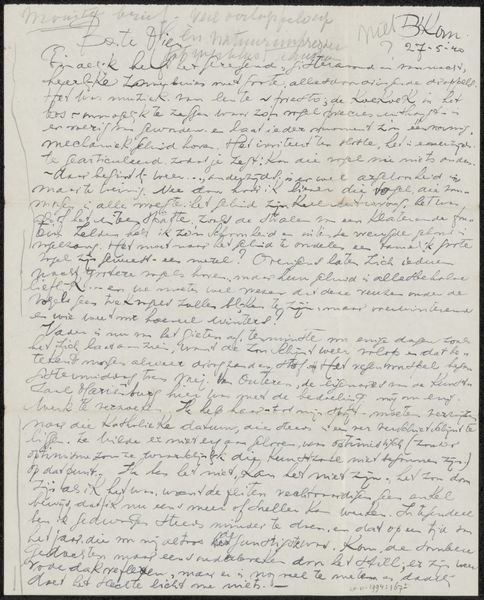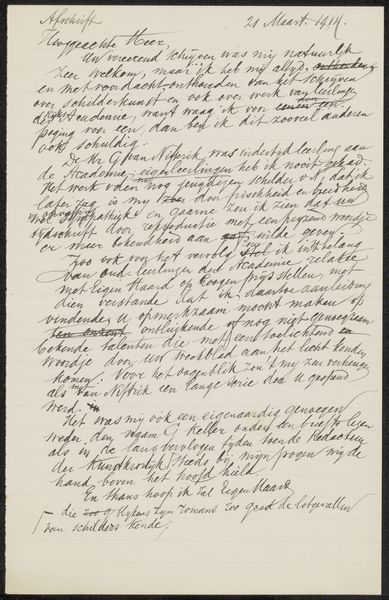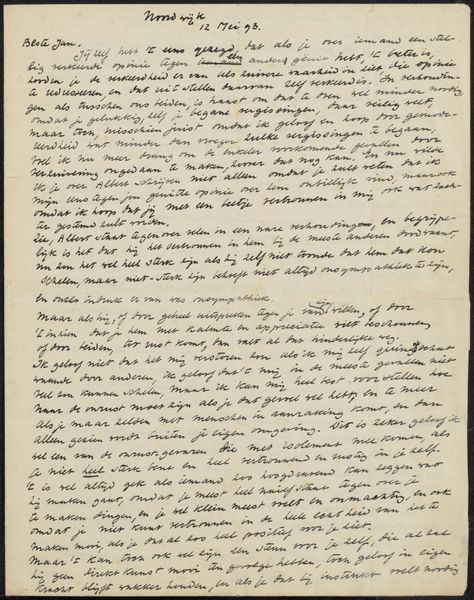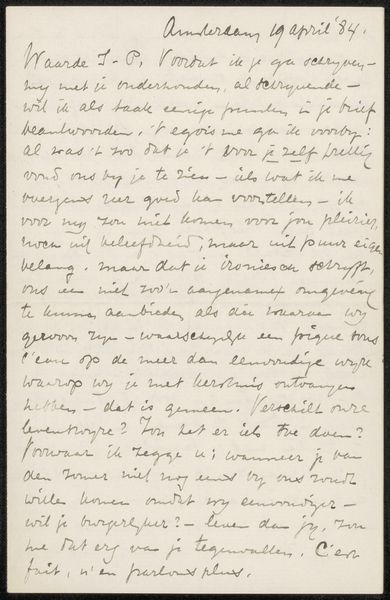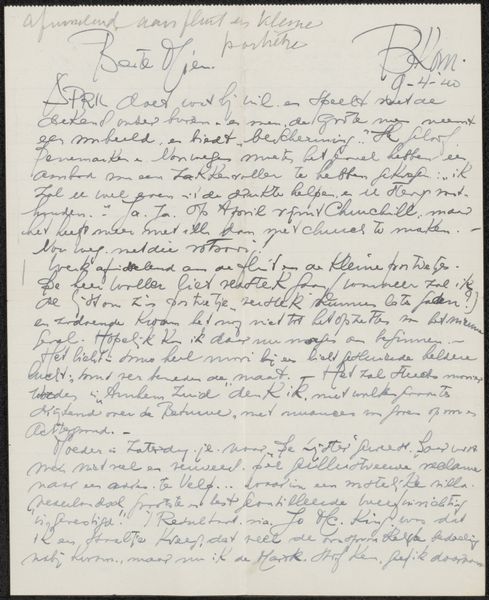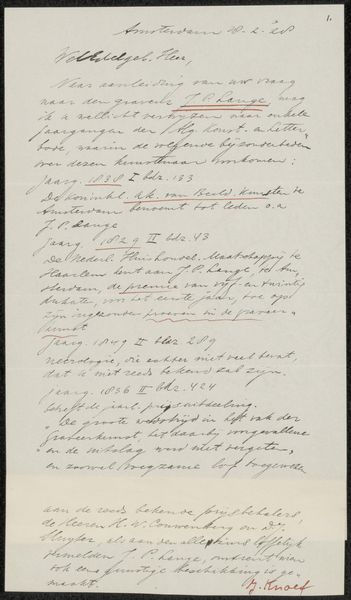
drawing, paper, photography, ink
#
drawing
#
paper
#
photography
#
ink
Copyright: Rijks Museum: Open Domain
Curator: Here we have "Brief aan Jean Helbig," possibly from 1942, by A. van der Boom. It combines drawing, ink, paper, and photography in its creation. Editor: My first impression is one of intimacy, but also a sort of fragile perseverance. The script, the aged paper—it all feels intensely personal, yet resilient, considering the possible historical context. Curator: Indeed. The letter form speaks to a time when correspondence was a primary mode of intellectual exchange. I wonder what prompted Van der Boom to reach out to Helbig. Considering that in that same era the Nazis transported hundreds of thousands of Jewish people and other groups from all over Europe to extermination camps. Sending art via post like that looks almost like an act of open defiance. Editor: Absolutely. This artifact offers more than meets the eye. The visible handwritten text in ink suggests a deep level of thought and reflection, doesn’t it? Perhaps they found in art itself a common space, a refusal to surrender to the growing darkness. Curator: It also highlights the critical role that personal archives play in preserving history, especially during periods of censorship or oppression. We might think about what's omitted as well as what is included here. It is telling that Helbig was sent the letter but seemingly had to hide or keep this under lock as the piece has only emerged recently. Editor: Agreed. It underscores the necessity of re-evaluating historical narratives by incorporating voices and perspectives that have been marginalized. When approaching documents like this, we're not just looking at the aesthetic qualities but thinking about power, resistance, and survival. Curator: The combination of art forms—drawing, ink, and photography—is especially potent. Van der Boom is not simply writing a letter; the person is creating a layered piece that exists at the intersection of communication and artmaking. It seems an attempt to secure historical record from their subjective perspective. Editor: Reflecting on this letter now, I am left contemplating the unsung stories held within seemingly simple objects—stories of quiet resistance and intellectual community, offering nuanced depth to our comprehension of the past. Curator: This letter, in its way, serves as an emblem of human spirit against the backdrop of turmoil, highlighting the enduring significance of artistic and personal expression as a testament to historical awareness.
Comments
No comments
Be the first to comment and join the conversation on the ultimate creative platform.
